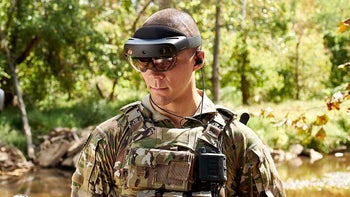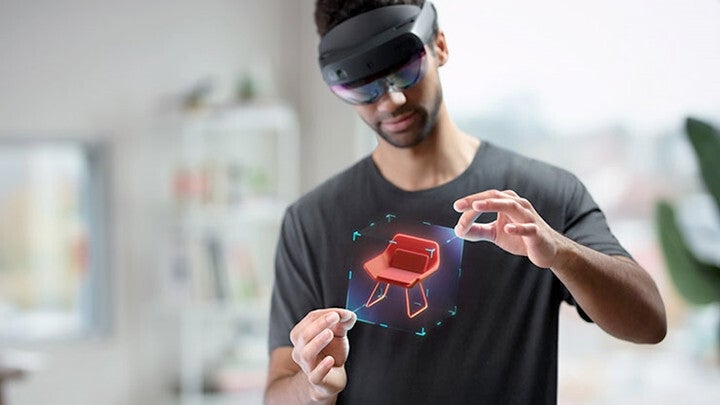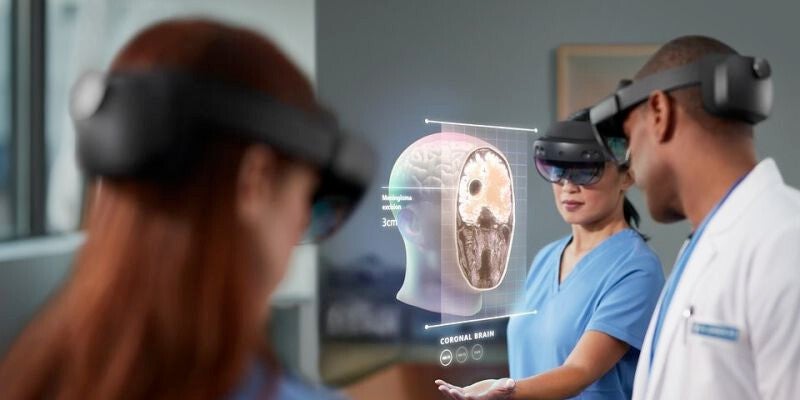Microsoft teams up with the US Army in a $22bn deal: Is AR the future?

Back to the future
Remember Microsoft’s HoloLens? It was introduced in January 2015, intended to make games more immersive, work more practical, and science more… fun.
Because when you change the way you see the world, you can change the world you see.
- Microsoft
Microsoft doesn’t want you to experience the world through a flat screen, so they will officially stop selling compu… JK. Although, they did call using a screen ‘cold’... The company’s idea is to bring users to a new level of interaction with computers.
The ARmy
Today, Microsoft is focusing on a completely new market, and we don’t blame them. That’s some serious business. The US Army (yes, that’s right) is very much into the idea of AR, but not to play Call of Duty. The $21.9bn deal is put in place in order to supply soldiers with an updated version of the HoloLens 2, announced back in 2019.

HoloLens 2
HoloLens 2 is the most comfortable mixed reality device available, with industry-leading solutions that deliver an immersive experience—all enhanced by the reliability, security, and scalability of cloud and AI services from Microsoft. Get started right away with off-the-shelf applications or build a custom solution using Microsoft Azure services.
- Microsoft
If the above description is vague: The HoloLens is just a pair of AR goggles - a computer, which sees what you see, leaving your hands free for more important things, like performing a complicated routine operation in the army, or a surgery on a patient (this was demoed too). The ‘holo’ element in the name comes from the fact that you actually see a hologram-like image before your eyes. The images are there, and you can interact with what you see - touch, resize, and move it around.

By the way, before you think that 22 billion dollars is a high cost to pay for a bunch of gadgets, wait until you see their retail price… $3,500,00! Now it makes more sense.
Clearly, the average person can’t afford to pay for them, but do we really need this, anyway? They can be a truly powerful tool with practical uses: to put together a vehicle, while the instructions are before your eyes - something like a YouTube tutorial on a higher level; to perform medical examinations, etc.

Make no mistake, the ‘Army edition’ will be more advanced, and tailored, according to its uses. It carries the name ‘Integrated Visual Augmentation System’ (IVAS), and it is specifically adapted to serve the military. Microsoft worked with the US Army for about two years to get the project off the ground. Now, the tech is ready to go into production. As per Microsoft’s words, the devices “will keep soldiers safer and make them more effective". This should result in increased awareness of their surrounding environment, which will aid information sharing and let soldiers make quicker and more precise decisions.
No big deal goes without controversies. Looking at a 2018 Bloomberg report, we can see that the deal started off ‘small’ at only $480 million. However, shortly after that, Microsoft’s workers stood up against it:
To make it clear, Microsoft isn’t developing weapons. However, the workers make a good point, since the company pitched the project as a way to “help architects and engineers build buildings and cars… help teach people how to perform surgery or play the piano… to push the boundaries of gaming, and to connect with the Mars Rover”, as reported by The Guardian back in 2019.
In fact, the HoloLens 2 is also used to power Microsoft’s Mesh project. The main idea of it is similar, but the demos are way more… innocent. This shows that the tech is versatile, and the company wants to (literally) give it a different name and adapt it for different scenarios.
Anyway… We can see how the engineers were left in the dark about exactly what the tech will be capable of. However, this could be because the company itself didn’t know what to do with it. Well, no matter what’s happened back then, now they’ve got a pretty good idea about how to use it.
All in all, we don’t want to be sceptical, but we’ll definitely wait to see the HoloLens 2 in use, before saying it can change the world for good. Until then... we stay cautiously optimistic.
Weapons of mass distraction
No big deal goes without controversies. Looking at a 2018 Bloomberg report, we can see that the deal started off ‘small’ at only $480 million. However, shortly after that, Microsoft’s workers stood up against it:
We did not sign up to develop weapons, and we demand a say in how our work is used
To make it clear, Microsoft isn’t developing weapons. However, the workers make a good point, since the company pitched the project as a way to “help architects and engineers build buildings and cars… help teach people how to perform surgery or play the piano… to push the boundaries of gaming, and to connect with the Mars Rover”, as reported by The Guardian back in 2019.
In fact, the HoloLens 2 is also used to power Microsoft’s Mesh project. The main idea of it is similar, but the demos are way more… innocent. This shows that the tech is versatile, and the company wants to (literally) give it a different name and adapt it for different scenarios.
Anyway… We can see how the engineers were left in the dark about exactly what the tech will be capable of. However, this could be because the company itself didn’t know what to do with it. Well, no matter what’s happened back then, now they’ve got a pretty good idea about how to use it.










Things that are NOT allowed: